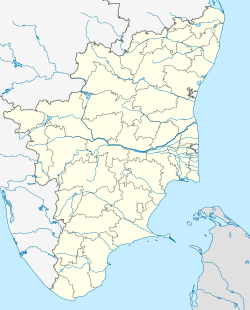볼란티스 알파
Alpha Volantis| 관측 데이터 신기루 J2000.0 이쿼녹스 J2000.0 | |
|---|---|
| 별자리 | 볼란스 |
| 우측 상승 | 09h 02m 26.79592s[1] |
| 탈위임 | −66° 23′ 45.8727″[1] |
| 겉보기 크기 (V) | +4.00[2] |
| 특성. | |
| 스펙트럼형 | KA3hA5mA5[3] V |
| U-B색지수 | +0.13[2] |
| B-V색지수 | +0.14[2] |
| 아스트로메트리 | |
| 방사 속도 (Rv) | +4.9km[4]/s |
| 고유 운동 (μ) | RA: −2.00[1]mas/yr Dec.: +95.51[1]mas/yr |
| 시차 (π) | 26.11 ± 0.12[1] 마스 |
| 거리 | 124.9 ± 0.6 리 (38.3 ± 0.2 pc) |
| 절대치수 (MV) | +1.60[5] |
| 궤도[6] | |
| 기간 (P) | 0.652 ± 0.001 yr |
| 반주축 (a) | 0.0321 ± 0.0013″ |
| 편심성 (e) | 0.041 ± 0.038 |
| 기울기 (i) | 101.9 ± 2.3° |
| 노드의 경도 (Ω) | 105.3 ± 1.4° |
| 페리아스트론 신기원을 이루다 (T) | 2015.593 ± 0.063 |
| 페리아스트론의 인수 (ω) (2차) | 248.5 ± 34.2° |
| 세부 사항 | |
| 미사 | 1.87[7] M☉ |
| 반지름 | 1.9[8] R☉ |
| 표면 중력 (log g) | 4.09[3] cgs |
| 온도 | 8,198[3] K |
| 금속성 [Fe/H] | +0.19[3] 덱스 |
| 회전 속도 (v sin i) | 30.6±0.4km[9]/s |
| 나이 | 427+183 −377[10] 마이어 |
| 기타 지정 | |
| 데이터베이스 참조 | |
| 심바드 | 자료 |
알파 볼란티스(Alpha Volantis, α Volantis)는 남쪽 별자리 볼란스에 있는 이진 항성계통이다[12]. 이것은 육안으로 볼 수 있을 만큼 밝은 +4.00의 겉보기 시야를 가지고 있다. 히파르코스 우주선으로 이루어진 시차 측정을 바탕으로 태양으로부터 125광년 떨어진 거리에 위치한다. 2010년 현재 이 계통의 두 구성 요소는 위치각 286.9°를 따라 0.0318°의 각이 분리되었다. 두 구성 요소 사이의 크기 차이는 0.1이다.[13] 시리우스 슈퍼클러스터의 일원으로 여겨진다.[5]
1차 성분은 kA3hA5mA5V의 별 분류를 가진 암별이다.[3] 이 표기법은 항성이 A3 항성의 약한 칼슘 II K선과 A5 항성의 수소와 금속선을 가지고 있음을 나타낸다.[14] 이것은 4억 2천 7백만 년의 추정된 나이를 가지고 있다.[10] 1992년, 그것은 적외선 과다를 방출하고 있는 것으로 밝혀졌는데, 이는 상황별 먼지 원반이 존재함을 암시한다.[15] 그러나 이후의 관찰은 이를 확인해주지 않았다.[16]
참조
- ^ a b c d e van Leeuwen, F. (2007), "Validation of the new Hipparcos reduction", Astronomy and Astrophysics, 474 (2): 653–664, arXiv:0708.1752, Bibcode:2007A&A...474..653V, doi:10.1051/0004-6361:20078357, S2CID 18759600.
- ^ a b c Mermilliod, J.-C. (1986), "Compilation of Eggen's UBV data, transformed to UBV (unpublished)", Catalogue of Eggen's UBV Data. SIMBAD, Bibcode:1986EgUBV........0M.
- ^ a b c d e Gray, R. O.; et al. (July 2006), "Contributions to the Nearby Stars (NStars) Project: spectroscopy of stars earlier than M0 within 40 pc-The Southern Sample", The Astronomical Journal, 132 (1): 161–170, arXiv:astro-ph/0603770, Bibcode:2006AJ....132..161G, doi:10.1086/504637, S2CID 119476992.
- ^ Wielen, R.; et al. (1999), "Sixth Catalogue of Fundamental Stars (FK6). Part I. Basic fundamental stars with direct solutions", Veröff. Astron. Rechen-Inst. Heidelb, Astronomisches Rechen-Institut Heidelberg, 35 (35): 1, Bibcode:1999VeARI..35....1W.
- ^ a b Eggen, Olin J. (August 1998), "The Sirius Supercluster and Missing Mass near the Sun", The Astronomical Journal, 116 (2): 782–788, Bibcode:1998AJ....116..782E, doi:10.1086/300465.
- ^ Tokovinin, Andrei; Mason, Brian D.; Mendez, Rene A.; Horch, Elliott P.; Briceño, Cesar (2019), "Speckle Interferometry at SOAR in 2018", The Astronomical Journal, 158 (1): 48, arXiv:1905.10436, Bibcode:2019AJ....158...48T, doi:10.3847/1538-3881/ab24e4, S2CID 197431463
- ^ David, Trevor J.; Hillenbrand, Lynne A. (2015), "The Ages of Early-Type Stars: Strömgren Photometric Methods Calibrated, Validated, Tested, and Applied to Hosts and Prospective Hosts of Directly Imaged Exoplanets", The Astrophysical Journal, 804 (2): 146, arXiv:1501.03154, Bibcode:2015ApJ...804..146D, doi:10.1088/0004-637X/804/2/146, S2CID 33401607.
- ^ Pasinetti Fracassini, L. E.; Pastori, L.; Covino, S.; Pozzi, A. (February 2001), "Catalogue of Apparent Diameters and Absolute Radii of Stars (CADARS)", Astronomy and Astrophysics (Third ed.), 367 (2): 521–524, arXiv:astro-ph/0012289, Bibcode:2001A&A...367..521P, doi:10.1051/0004-6361:20000451, S2CID 425754.
- ^ Díaz, C. G.; et al. (July 2011), "Accurate stellar rotational velocities using the Fourier transform of the cross correlation maximum", Astronomy & Astrophysics, 531: A143, arXiv:1012.4858, Bibcode:2011A&A...531A.143D, doi:10.1051/0004-6361/201016386, S2CID 119286673.
- ^ a b Song, Inseok; et al. (February 2001), "Ages of A-Type Vega-like Stars from uvbyβ Photometry", The Astrophysical Journal, 546 (1): 352–357, arXiv:astro-ph/0010102, Bibcode:2001ApJ...546..352S, doi:10.1086/318269, S2CID 18154947.
- ^ "alf Vol". SIMBAD. Centre de données astronomiques de Strasbourg. Retrieved 2016-09-02.
{{cite web}}: CS1 maint : 포스트스크립트(링크) - ^ Eggleton, P. P.; Tokovinin, A. A. (September 2008), "A catalogue of multiplicity among bright stellar systems", Monthly Notices of the Royal Astronomical Society, 389 (2): 869–879, arXiv:0806.2878, Bibcode:2008MNRAS.389..869E, doi:10.1111/j.1365-2966.2008.13596.x, S2CID 14878976.
- ^ Hartkopf, William I.; et al. (2012), "Speckle Interferometry at SOAR in 2010 and 2011: Measures, Orbits, and Rectilinear Fits", The Astronomical Journal, 143 (2): 19, Bibcode:2012AJ....143...42H, doi:10.1088/0004-6256/143/2/42, 42.
- ^ Gray, Richard O.; Corbally, Christopher J. (2009), Stellar Spectral Classification, Princeton, New Jersey: Princeton University Press, p. 309, ISBN 978-0-691-12511-4.
- ^ Cheng, K.-P.; et al. (September 1992), "Newly identified main-sequence A stars with circumstellar dust", Astrophysical Journal, Part 2, 396 (2): L83–L86, Bibcode:1992ApJ...396L..83C, doi:10.1086/186522.
- ^ Gáspár, András; et al. (May 2013), "The Collisional Evolution of Debris Disks", The Astrophysical Journal, 768 (1): 29, arXiv:1211.1415, Bibcode:2013ApJ...768...25G, doi:10.1088/0004-637X/768/1/25, S2CID 119295265, 25.



